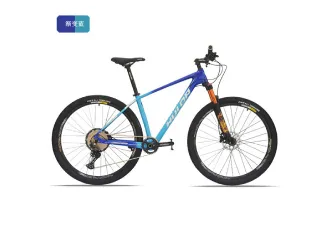
- Afrikaans
- Albanian
- Amharic
- Arabic
- Armenian
- Azerbaijani
- Basque
- Belarusian
- Bengali
- Bosnian
- Bulgarian
- Catalan
- Cebuano
- Corsican
- Croatian
- Czech
- Danish
- Dutch
- English
- Esperanto
- Estonian
- Finnish
- French
- Frisian
- Galician
- Georgian
- German
- Greek
- Gujarati
- Haitian Creole
- hausa
- hawaiian
- Hebrew
- Hindi
- Miao
- Hungarian
- Icelandic
- igbo
- Indonesian
- irish
- Italian
- Japanese
- Javanese
- Kannada
- kazakh
- Khmer
- Rwandese
- Korean
- Kurdish
- Kyrgyz
- Lao
- Latin
- Latvian
- Lithuanian
- Luxembourgish
- Macedonian
- Malgashi
- Malay
- Malayalam
- Maltese
- Maori
- Marathi
- Mongolian
- Myanmar
- Nepali
- Norwegian
- Norwegian
- Occitan
- Pashto
- Persian
- Polish
- Portuguese
- Punjabi
- Romanian
- Russian
- Samoan
- Scottish Gaelic
- Serbian
- Sesotho
- Shona
- Sindhi
- Sinhala
- Slovak
- Slovenian
- Somali
- Spanish
- Sundanese
- Swahili
- Swedish
- Tagalog
- Tajik
- Tamil
- Tatar
- Telugu
- Thai
- Turkish
- Turkmen
- Ukrainian
- Urdu
- Uighur
- Uzbek
- Vietnamese
- Welsh
- Bantu
- Yiddish
- Yoruba
- Zulu
Nov . 27, 2024 22:14 Back to list
Tips for Properly Adjusting Your Mountain Bike Shifter for Smooth Riding
How to Adjust Mountain Bike Shifters A Comprehensive Guide
Mountain biking can be an exhilarating experience, filled with breathtaking trails, challenging climbs, and thrilling descents. However, nothing can ruin a ride quicker than gears that refuse to shift smoothly. Properly adjusted shifters are essential for ensuring a seamless transition between gears and enhancing your overall riding experience. This guide will provide you with the steps and tips needed to adjust your mountain bike shifters effectively.
Understanding Your Shifter and Derailleur System
Before diving into the adjustment process, it's crucial to have a basic understanding of how your gear system works. Most mountain bikes are equipped with a derailleur system that consists of two main components the front derailleur, which moves the chain between the front chainrings, and the rear derailleur, which shifts the chain across the rear cogs. The shifters, located on the handlebars, control these derailleur movements through cables.
Tools You Will Need
To successfully adjust your mountain bike shifters, gather the following tools - A 5mm Allen wrench (for adjusting the derailleur) - A Phillips screwdriver or flathead screwdriver (depending on your derailleur model) - Cable cutters (if you need to replace cables) - A bike stand or something to hold your bike upright
Step-by-Step Adjustment Process
1. Inspect the Shifters and Cables Start by inspecting your shifters for any signs of wear or damage. Check the cables for frays or rust. If the cables are old or damaged, consider replacing them before adjusting anything. Smooth cables are essential for quick and responsive shifting.
2. Check for Proper Cable Tension With the bike in a stand or upside down, shift to the smallest chainring and the smallest rear cog. This position relieves tension on the shifter cables. Next, pull the cable snug and firmly secure it into the clamp on the derailleur. This initial tension is crucial for smooth shifting.
how to adjust mountain bike shifter

3. Adjust the Limit Screws The limit screws on both the front and rear derailleur prevent the chain from going beyond the smallest and largest gears. - For the front derailleur, shift to the larger chainring and ensure that the derailleur is positioned just above the chain, between 1-3 mm clearance. - For the rear derailleur, shift to the smallest cog and ensure the derailleur is aligned directly above the cog. Adjust the limit screws accordingly. The H-screw controls the highest gear, while the L-screw controls the lowest gear.
4. Fine-Tune the Cable Tension After setting the limit screws, shift through each gear to check how well the chain moves across the cogs. If the chain hesitates or doesn’t shift precisely, you may need to adjust the cable tension. Most shifters have a barrel adjuster that allows for fine-tuning without needing to re-thread the cable.
5. Test the Shift With everything adjusted, it’s time to take your bike for a test ride. Shift through all gears under load if possible, as this simulates real riding conditions. Pay attention to how smoothly the shifts occur and whether the chain drops or hesitates.
6. Make Additional Adjustments Depending on your test ride, you may need to go back and make further adjustments to cable tension or limit screws. Don’t hesitate to repeat this process until you achieve smooth and reliable shifting across all gears.
Regular Maintenance Tips
Now that your mountain bike shifters are adjusted, it’s vital to maintain them for optimal performance. Regularly inspect cables, housing, and derailleurs for wear and tear. Clean and lubricate your derailleur and chain to ensure smooth operation. Additionally, consider performing a thorough tune-up at the start of each biking season.
Conclusion
Adjusting mountain bike shifters may seem daunting at first, but by following these steps, you’ll become proficient at maintaining your bike’s gearing system. A well-adjusted shifter not only enhances your biking experience but also ensures you can tackle any trail with confidence. Happy riding!
-
The Ultimate Kids' Four-Wheeler Experience
NewsJul.09,2025
-
The Ultimate Guide to Mountain Bikes: Gear Up for Your Ride
NewsJul.09,2025
-
The New Age of Cycling: Electric Bikes for Every Rider
NewsJul.09,2025
-
The Best Kids Bicycles: Ride in Style and Safety
NewsJul.09,2025
-
The Best 3-Wheel Scooters for Kids: Fun, Safety, and Adventure
NewsJul.09,2025
-
Revolutionize Your Ride: Affordable Electric Bikes
NewsJul.09,2025
-
Finding the Perfect Mountain Bike for Every Rider
NewsJul.09,2025



